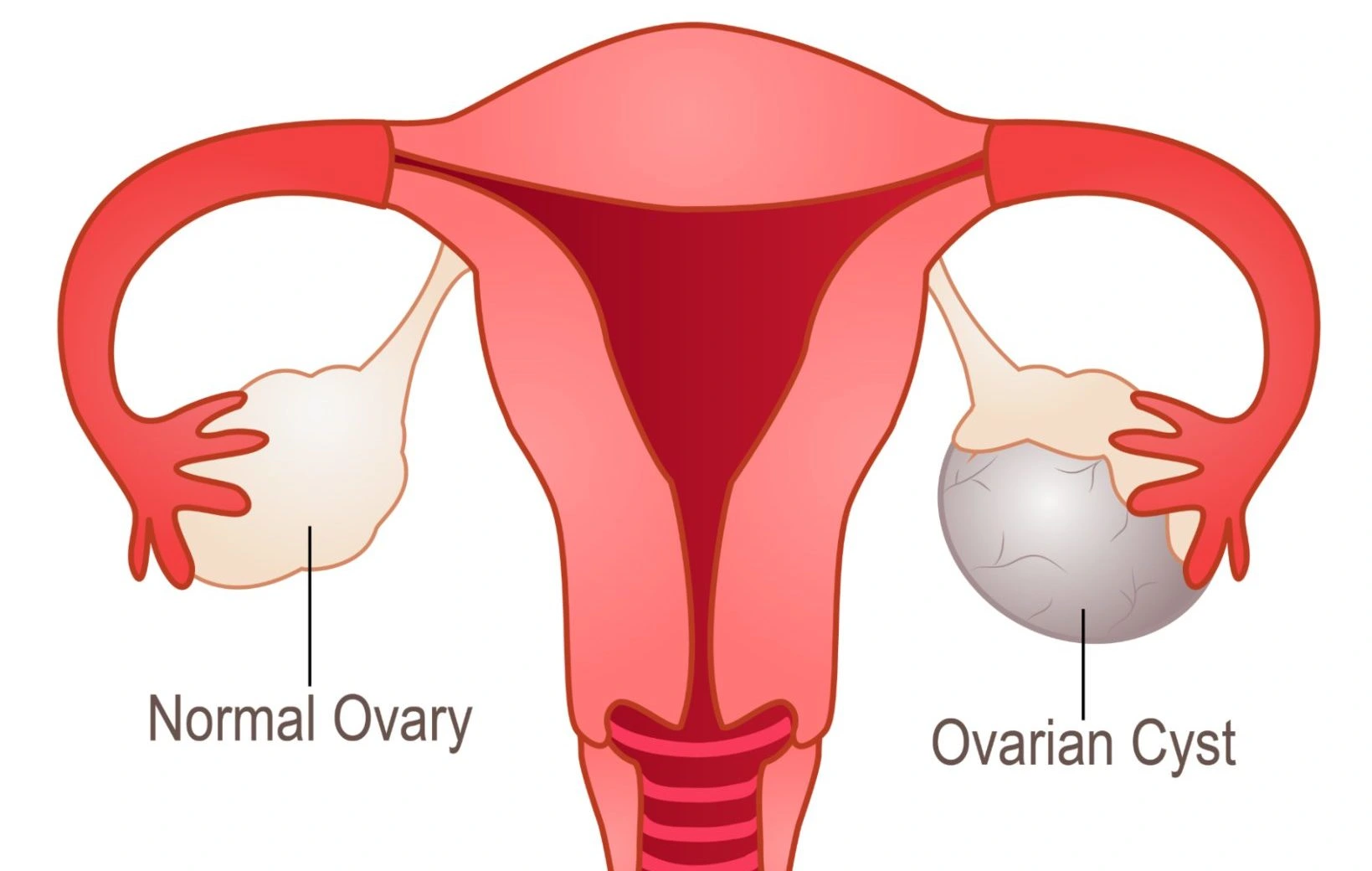Specialty >> Laparoscopic Treatment for Ovarian Cysts
Laparoscopic Treatment for Ovarian Cysts

What is an ovarian cyst?
An ovarian cyst is a sac or pouch filled with fluid or other tissue that forms on the ovary. Ovarian cysts are quite common in women during their childbearing years. A woman can develop one cyst or many cysts. Ovarian cysts can vary in size. In most cases, cysts are harmless and go away on their own. In other cases, they may cause problems and need treatment.
There are different types of ovarian cysts. Most cysts are benign (not cancerous). Rarely, a few cysts may turn out to be malignant (cancerous)
What are the symptoms of ovarian cysts?
Most ovarian cysts are small and do not cause symptoms. Some cysts may cause a dull or sharp ache in the abdomen and pain during certain activities. Larger cysts may cause torsion (twisting) of the ovary that causes pain. Cysts that bleed or rupture (burst) may lead to serious problems requiring prompt treatment.
How are ovarian cysts diagnosed?
An ovarian cyst may be found during a routine pelvic exam. If your health care provider finds an enlarged ovary, tests may be recommended to provide more information:
- Vaginal ultrasound —This procedure uses sound waves to create pictures of the internal organs that can be viewed on a screen. For this test, a slender instrument called a transducer is placed in the vagina. The views created by the sound waves show the shape, size, location, and makeup of the cyst.
- Laparoscopy—In this type of surgery, a laparoscope—a thin tube with a camera—is inserted into the abdomen to view the pelvic organs. Laparoscopy also can be used to treat cysts.
- Blood tests— If you are post menopause, in addition to an ultrasound exam, you may be given a test that measures the amount of a substance called CA 125 in your blood. An increased CA 125 level may be a sign of ovarian cancer in women past menopause. In premenopausal women, an increased CA 125 level can be caused by many other conditions besides Therefore, this test is not a good indicator of ovarian cancer in premenopausal women.
How are ovarian cysts treated?
Birth control pills may be prescribed to treat some types of ovarian cysts. This treatment will not make cysts you already have go away. But it will prevent new cysts from forming.
If your cyst is large or causing symptoms, your health care provider may suggest surgery. The extent and type of surgery that is needed depends on several factors:
- Size and type of cyst
- Your age
- Your symptoms
- Your desire to have children
Sometimes, a cyst can be removed without having to remove the ovary. This surgery is called cystectomy. In other cases, one or both of the ovaries may have to be removed. Your doctor may not know which procedure is needed until after the surgery begins.
Glossary
Benign: Not cancer.
CA 125: A substance in the blood that may increase in the presence of some cancerous tumors.
Cystectomy: Surgical removal of a cyst.
Laparoscopy: A surgical procedure in which a slender, light-transmitting instrument, the laparoscope, is used to view the pelvic organs or perform surgery.
Malignant: A term used to describe cells or tumors that are able to invade tissue and spread to other parts of the body.
Menopause: The process in a woman’s life when ovaries stop functioning and menstruation stops.
Ovaries: Two glands, located on either side of the uterus, that contain the eggs released at ovulation and that produce hormones.
Pelvic Exam: A manual examination of a woman’s reproductive organs.
Ultrasound: A test in which sound waves are used to examine internal structures. During pregnancy, it can be used to examine the fetus.

